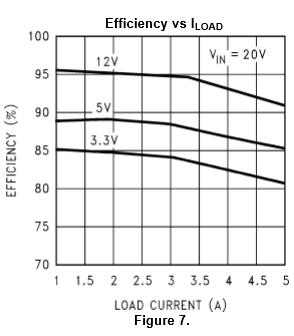I'm working with a TI LM2678-ADJ regulator (granted, on a breadboard) to power a 40" led strip. Trying to figure out why the measured efficiency is about ~15% lower than what the charts in the datasheet claim.
Input: Vin = 20V, Iin = 0.925A (18.5W*)
Output: Vout = 12V, Iout = 1.255A (15.06W*)
*Didn't measure power directly, but using V x I to calculate power based on measured V and I.
So given those values it would seem the efficiency (Pout/Pin) is about 81.4%.
But the chart in the datasheet claims it should be about 95% efficient:

For refecence here the schematic from the datasheet:

Could the ~15% discrepancy be attributed to the other components in the circuit? I'm not using exactly the recommended components from the datasheet but at least similar spec'd ones (from what I can tell).
This is the inductor I'm using: http://www.digikey.com/product-detail/en/2107-V-RC/M8852-ND/775391
